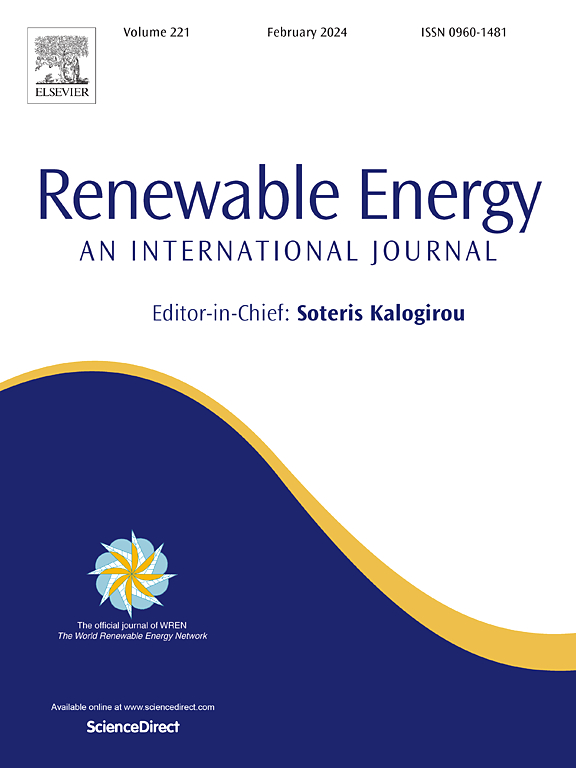Hybrid PVT integrated pyramid solar still: 11E, sustainability, and sustainable development goals assessment
IF 9
1区 工程技术
Q1 ENERGY & FUELS
引用次数: 0
Abstract
Photovoltaic thermal (PVT) integrated solar stills (SSs) can address the challenges associated with electricity scarcity and water desalination. The experiment encompasses a synergistic approach of delivering the heated fluid from the PVT with phase change materials (PVT/PCM) and PVT integrated hybrid nano-materials with fin (PVT/HNPCM/Fin) setups to the water basin of the modified pyramid SSs for enhancing the evaporation rate. A comprehensive analysis is conducted on the impact of hollow circular fins, black sand, hybrid nano-particles with PCM and sponge in SS cases. For PVT scenarios, the effects of hybrid nano-enhanced PCM and fins in serpentine copper pipe layout at an average flow rate of 0.0021 kg/s are also analyzed using 11E sustainability matrices. Modified SS exhibited the highest productivity of 4.109 L/m2/day, with a cost reduction of about 94.13 % per liter. Consequently, the PVT/HNPCM/Fin system achieved thermal efficiency of 75.11 % and a relative improvement in electrical energy efficiency of approximately 15.70 % over the traditional PV module. Modified SS exhibits the highest exergo-enviroeconomic factor among the other SSs, with a difference of about 30.57 %. At a moderate cost, modified SS with PVT integration has a high capacity to produce thermal energy for distillation and 6.98 tons of CO2 emissions mitigation possibilities over the lifetime. Finally, the proposed modification and assimilation not only supports the sustainability of water purification processes with clean electrical energy generation but also contributes significantly to achieving multiple Sustainable Development Goals (SDG 6, 7 and 13) related to energy, water, climate, and economic development.

求助全文
约1分钟内获得全文
求助全文
来源期刊

Renewable Energy
工程技术-能源与燃料
CiteScore
18.40
自引率
9.20%
发文量
1955
审稿时长
6.6 months
期刊介绍:
Renewable Energy journal is dedicated to advancing knowledge and disseminating insights on various topics and technologies within renewable energy systems and components. Our mission is to support researchers, engineers, economists, manufacturers, NGOs, associations, and societies in staying updated on new developments in their respective fields and applying alternative energy solutions to current practices.
As an international, multidisciplinary journal in renewable energy engineering and research, we strive to be a premier peer-reviewed platform and a trusted source of original research and reviews in the field of renewable energy. Join us in our endeavor to drive innovation and progress in sustainable energy solutions.
 求助内容:
求助内容: 应助结果提醒方式:
应助结果提醒方式:


